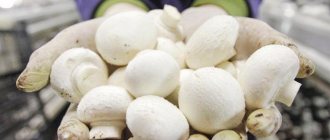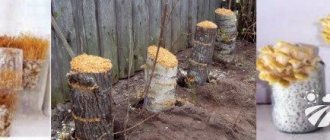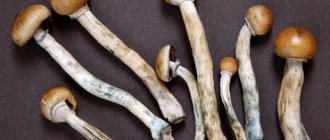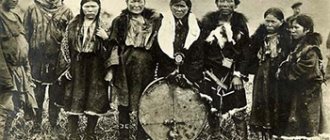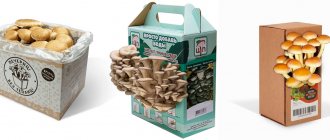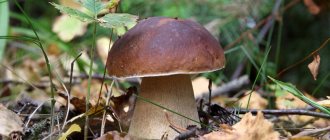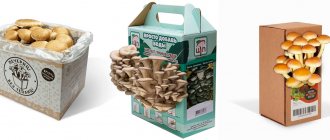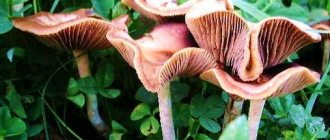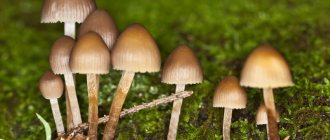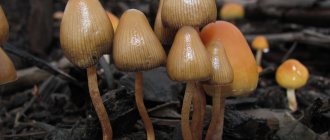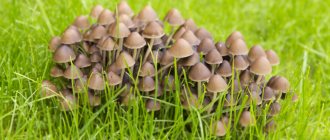Mushrooms as food
Mushrooms are the fleshy, fruiting bodies of fungi that are capable of forming the spores necessary for reproduction. Most often, representatives of this kingdom develop above the ground and are a small part of a larger organism. This organism is found in the soil and lives among the roots of trees and other plants.
There are poisonous mushrooms, but there are also edible ones that benefit human health, so it is recommended to eat them. Among the mushroom delicacies you can find shiitake, chanterelles, truffles and even edible morel, despite its unappetizing name. Products with fungus may not contain mushrooms at all: cheese, grain, fruit, beer and wine, bread. In all these products you can find a fungus that is beneficial for the body. Baker's yeast, also called Saccharomyces cerevisiae, is an important ingredient in the preparation of baked goods. Natural yeast based on fungus has been providing us with our main food for thousands of years.
Impact of mushrooms on human health
The nutritional value of mushrooms is estimated to be somewhere between meat and vegetables. There is debate about their usefulness, but it is recognized that they have a positive effect on the human body due to the proteins, minerals and vitamins B, C and D they contain. Each of the components effectively affects the functioning of the cardiovascular and central nervous systems on the positive side. They also all stimulate the strengthening of bone tissue.
Using mushrooms to fight cancer
A study published in the Journal of Experimental Biology and Medicine concluded that all popular varieties of mushrooms reduce the number of breast cancer cells by 1/3. Breast cancer is not the only disease that fruiting bodies can help cure. Scientific papers on prostate and stomach cancer have similar conclusions.
Improving immunity and supplying the body with vitamins
Two mushroom compounds, beta-glucan and lentinan, have beneficial effects on the health of consumers due to the fact that they are natural immune stimulants. Mushrooms are rich in important vitamins. Many varieties will delight you with a large amount of vitamin D, and the Cremini variety is famous for vitamin B12. Cremini is a great option for vegetarians, as B12 is high in animal products and hard to find in plants.
How to distinguish from similar species
Cubensis or, as it is also called Sani-Isidro, is not the only hallucinogenic fungus. Moreover, some species are practically indistinguishable from the described variety, at least when comparing them superficially. As a clear example, we can cite at least three doubles, including:
- conocybe tender;
- Psilocybe fimetaria;
- paneolus.
Representatives of conocybe differ from cubensis in that they have a darker color of the hymenophore layer and spore powder, as close as possible to brown. If we consider the fimetaria, then its characteristic feature is the residual layer of the veil, which is more impressive in size, hanging from the edges of the cap. As for the representatives of the Paneolus family, they usually all have much smaller sizes, in all other respects being an almost exact copy of Cubensis.
But there is also Psilocybe bordered, semi-lanceolate, poop bald and many other mushrooms similar to the Cuban hallucinogen, which can also have the most unexpected effect on the mental state of their brave tasters.
Medical use
The earliest recorded medicinal use of mushrooms is believed to be red yeast rice, developed in China in the 8th-9th centuries AD. Cultivation of yeast in rice produces a pharmaceutically active mixture of compounds. In the modern world, many patients with life-threatening diseases receive mushroom-based drugs every year. Science has recognized the medical value of their metabolites.
Perhaps the most effective, yet controversial, fungal medicine is psilocybin mushrooms, which have been used for centuries for their healing properties. Psychologist Michael Pollan's How to Change Your Mind: What the New Science of Psychedelics Teaches Us About Consciousness, Death, Addiction, Depression, and Transcendence recounts the history of these drugs. The mycologist claims that psychedelics were previously legal and successfully used in the United States to treat mental disorders, as well as to relieve anxiety, depression and addiction. Pollan says that in the 1950s and 1960s, many doctors in psychiatric hospitals viewed LSD and psilocybin as miracle cures.
Description
Psilocybe cubana is a representative of the genus Psilocybe mushrooms of the Strophariaceae family. It is hallucinogenic due to the content of psilocin and psilocybin.
hat
Psilocybe cubensis.
Can grow up to 8 cm in diameter. At first it has a sharp conical shape, then the edges open up and form a “bell”.
Cultivated mushrooms have an almost flat surface with raised edges. The color of the cap is yellowish; in overripe specimens it is brownish. The surface is smooth and dry.
Leg
Thicker and longer than a number of hallucinogenic mushrooms - reaches 15 cm in height and 1 cm in diameter. It thickens downwards.
The surface is smooth and dry. In the upper third of the leg, the remains of a private veil are observed in the form of a white ring-shaped outgrowth, which darkens as the fungus grows.
Spore-bearing layer
San Isidro.
Hymenophore lamellar. The plates are frequently located, dark gray or gray with a purple tint. The edges of the plates are whitish.
Pulp
Dense, white, with mechanical damage it acquires a bluish tint.
Spore powder
The spores are reddish-brown, large, round in shape, with thick walls. The spore powder is also reddish brown.
How do mushrooms work?
Thanks to hallucinogens, perception, mood and other conscious and subconscious processes change. When using hallucinogens, specific receptors are activated, which are called HT2A (2AR) and are most often triggered by serotonin. These changes in the brain allow a person to feel new emotions and get vivid impressions. A person who has taken the spores of psilocybin mushrooms has significantly enhanced senses: colors seem richer, sound is louder, taste and aroma are more intense. A mushroom lover will focus on what surrounds him at the moment, on his feelings, and extraneous thoughts, dreams and memories will disappear from his head.
After the drug leaves the body, the impressive effects will remain in the mind for a long time. People who have tried psychedelics have reported that their anxiety and depression left them after the first use. They also spoke about the so-called spiritual awakening, due to which consciousness was constantly changing. In their opinion, using psychedelics it is easier to focus on the present; mushrooms help to understand the interconnection of all surrounding objects and actions.
In the case when a person is plagued by mental illness or wants to experience the notorious spiritual enlightenment and stop the flow of thoughts, then consuming psilocybin mushrooms would be an excellent option. In this case, information about growing these helpers may be useful.
Can eating mushrooms cause hallucinations?
You may be interested in: How do edible talkers differ from false mushrooms? How many days after rain do mushrooms grow? Bitter mushroom: photo and detailed description
The action of cubensis causes pseudohallucinations, which differ from full-fledged visions only in that a person is aware of the source of their origin, knowing full well that what he saw has nothing to do with the real world.
As for the duration of this effect, it usually does not exceed 4-6 hours, making itself felt after 25-40 minutes (when using a decoction, the time can be reduced to 10-15 minutes). It is noteworthy that the onset of a trip may be delayed if you had a good snack beforehand.
The euphoria itself, if you don’t have to feel a feeling of complete oppression instead, lasts no longer than an hour, after which the whole effect begins to slowly decline. The effect of mushrooms will have nothing to do with alcohol intoxication, except at the very beginning, reminiscent of an acute hangover syndrome, which is caused by the toxins contained in the fruiting bodies.
The recovery from this unusual state can take a significant amount of time, and in some cases, residual effects are observed for several more days, causing desperate tasters quite noticeable discomfort. Thus, general depression, rapid mood swings, unjustified anxiety and restlessness are unlikely to brighten up the leisure time of someone who has decided to try hallucinogenic mushrooms.
Growing Magic Mushrooms
After becoming familiar with the great benefits of mushrooms, a person may want to cultivate different varieties on their own. It should be noted that they are much more difficult to grow than conventional crops, but if you have the necessary information, the cultivation process will become much easier. The cultivation technique described in this article is suitable for most mushrooms, but we focus specifically on magic varieties.
Now the cultivation of psychedelics is prohibited in most countries. On the other hand, doctors are trying hard to convince political structures of the therapeutic effectiveness of drugs such as psilocybin. Perhaps in the near future such medical products will become legal, as well as their breeding. If you want to grow psychedelic mushrooms, it is recommended that you first study the legislation to determine the legality of such an act, so as not to run into serious problems.
Beginning mushroom pickers usually ask about the duration of the growing process. It has several stages:
- During the first week, you will be inoculated with psilocybin mushroom spores until germination;
- Over the next 2-4 weeks, the spores will germinate until the substrate is completely colonized;
- The beginning of the fruiting cycle is approximately 14 days.
After half a month, the base will begin to turn blue, and the fruits will stop forming. In total it will take about a month to a month and a half before fruiting begins.
The secret to growing overnight
Every mushroom picker knows that in some years the yield will be maximum, while in others it is difficult to find even a few mushrooms. Often such differences in the number of mushrooms in the forest occur for no apparent reason. This is because for most species the specific conditions necessary to achieve the fruiting phase have not yet been determined.
Saprophytic varieties (including hallucinogenic varieties, except the family Inocybe: mycorrhizae with trees) usually bear fruit after optimal mycelial growth is stimulated by appropriate nutrient substrates, subject to the following environmental requirements:
- Decrease in temperature until fruiting begins.
- Increasing humidity to 95-100%.
- Reducing carbon dioxide concentration by increasing air circulation.
- Getting enough sunshine.
The last two points already concern the basic rules for growing mushrooms at home, since these factors are always present in the wild. But when cultivating in glass containers or enclosed spaces, this environment is not always maintained naturally, so it often needs to be specially created.
It is no coincidence that saprophytic species almost always bear fruit in the fall. Plant substrates such as branches and leaves fall to the ground during this period. After this, they are immediately populated by hyphae from fungal spores. It's part of a natural cycle. A simultaneous drop in temperature and increase in humidity are preconditions for fruiting. The rapid growth of mushrooms “overnight” is a well-known ability of mycelium. This happens because this substance has already gathered in groups. Immediately after this follows the process of differentiation into rudiments with gradual division into caps and legs. The entire mushroom is ready to grow quickly if there is sufficient humidity and ideal temperatures. The following figure illustrates a comparable process of fruiting mycelium of Psilocybe cubensis (Earle) on an agar base inside a test tube. It took about a week.
What tools are needed
Getting a generous harvest requires a lot of effort. In addition, a mushroom picker must have a whole arsenal of items. To put it simply, the entire cultivation period can be divided into 2 parts, each of which requires different materials.
First stage
What you will need:
- 10 sterilized inoculation jars with liner. It is recommended to use one jar for each cube of spores in the syringe. You can use ordinary jars with a wide neck and lids. Brown rice flour or another substrate is ideal as a substrate. However, in this case, be sure to pay special attention to sterilizing the equipment;
- Rubber gloves;
- Paper towels;
- Face mask (thanks to certain events, this is now a popular accessory):
- Medical alcohol;
- Syringe with fungal spores;
- Hypodermic needles of the required size for the syringe being used (if they were not included in the kit with the syringe, you will have to buy them separately);
- Lighter;
- Disinfectant spray.
Second phase
At this stage, arm yourself with the following tools:
- Sprayer made of plastic;
- Chamber for cultivation (a food container is suitable, in which you need to make several holes a couple of centimeters in diameter on each side for air circulation);
- A clean place without direct sunlight that is rarely visited (basements and cellars are good options);
- Temperature and humidity meter;
- Vermiculite (can be replaced with perlite, but there are differences between them, so study each and choose the most suitable material).
To get a rich harvest, keep an eye on 4 important aspects:
- Hygiene;
- Humidity level;
- Temperature conditions;
- Illumination.
More specific guidance on each aspect is described below.
Psilocybin – effects of altered perception
Once in the body, psilocycin affects different areas of the brain:
- The cingulate gyrus is in its anterior part, active during negative emotions.
- The posterior part of the cingulate gyrus, which works even in sleep.
- The medial prefrontal zone, which combines all incoming information into a coherent picture of world perception.
In this case, the effect of psilocybin on the body is to suppress all three areas.
Therefore, simultaneously with the onset of a euphoric state, the perception of the world is completely distorted. It seems to the addict that time stops its flow, inanimate objects in his visions come to life. In his hallucinations, he seems to go beyond the limits of the body, experiences an expansion of consciousness to universal immensity, or a mystical contact with higher divine essences. In this sense, the effect of a mushroom psychotropic on the body is often compared to the effect of LSD. It lasts up to 6 hours.
But for several days after administration, the substance maintains the emotions that have surfaced and the inability to separate fantasies from reality until it is completely removed.
Call 8 (495) 150-85-96
First growing phase
First you need to create a so-called “cake” for germination. “Cake” is the name given to the base on which the mushrooms grow. It will be ready at the moment when the mycelium completely colonizes the jar and attaches to the substrate. When you pull the base out of the glass container, it will look like a mushroom cake. Now it’s clear what “cake” has to do with it.
Sterilization is the first step
The main enemy of hallucinogenic mushrooms during the growing period is harmful bacteria that enter the jar during the inoculation process. They thrive in a climate that is optimal for the cultivation of fruiting bodies. For this reason, their reproduction and destruction of spores is an inevitable outcome. To reduce their numbers, carefully read the following recommendations.
You need a “secret laboratory” that functions as a preparation room. A small room or bathroom is a good choice. Gather all the necessary tools from the list above, put the mask on your face, enter the room and lock the door behind you. Now you need to spray the disinfectant. After this, put on rubber gloves and wipe the jars with medical alcohol using prepared towels. Pay special attention to the top of the container, as most of the bacteria collect there.
Vaccination - the second step
Use a lighter to heat the metal part of the hypodermic needle until it turns red. As a rule, this instrument is sterilized before it is released for sale, but it is better to protect yourself.
Do not place the needle on any surface until it has cooled down. After this, shake the syringe to evenly distribute the spores, insert the needle into the port and insert one cube into the container. The same procedure will need to be repeated with all banks. Remember to sterilize the needle before each use.
Waiting is the third action
After injection, the jars should be placed in a previously prepared box, closed and left in a warm place without light. Monitor the temperature: it is recommended to keep it between 26 and 30 degrees Celsius. You will have to hold out for 5 days and not check the spores of psilocybin mushrooms. It's difficult, but it will bear fruit.
After a few days, a white substance will appear inside the jar. If you see a picture like this, it means everything worked out! The light something in the glass container is mycelium - the vegetative part of the mushroom. It can be compared to the roots of plants, and the fruiting body to a flower or fruit. The mycelium should develop for about half a month. If the jars are completely colonized with white matter, you will have to wait another week and move on to the second phase.
Latest research results
Today, Psilocybe cubensis is undoubtedly one of the most easily cultivated mushrooms in the world and can grow on a wide variety of substrates. Naturally occurring specimens are most often found in cow dung. Generally, this species tends to grow on manure and straw, causing them to rot. But fruiting bodies can also use nutrients previously converted by other organisms, such as various types of compost.
It is impossible within the scope of this article to discuss all the details regarding the process of fruiting of psychotropic species. P. Stamets and J.S. Chilton are the authors of two outstanding books that cover all the technical and practical aspects of growing mushrooms. Not only hallucinogenic specimens are described there, but information is also provided about many varieties of edible specimens. However, it is worth highlighting the fact that Psilocybe cubensis crops develop better when horse or cow manure is added to the initial nutrient mixtures. This is evidenced by a relatively higher growth rate and the formation of relatively more stable samples. However, before manure is added to the nutrient mixture, it must first be suspended in water and autoclaved, which greatly reduces the risk of contamination. Only after this should the suspension be added to the rye grain substrate and sterilized again.
Despite numerous claims in the popular literature, most attempts by non-professionals to cultivate the fruiting bodies of Psilocybe cubensis on a rye grain substrate are thwarted by the ingress of harmful substances such as bacteria and mold. Although fungi are organisms that are not capable of photosynthesis and therefore are not considered plants, some species, including Psilocybe cubensis, are heliotropes. In simple words, they will grow in the direction of stationary light sources. All Psilocybe species studied to date require light to stimulate the biochemical process in the mycelium that causes fruiting. Additional exposure to light is necessary if the fruiting bodies are to develop into normal forms and produce spores.
In addition to a series of interesting physiological experiments conducted by E.R. Badham in the 1980s, there are several other noteworthy substrates for cultivating Psilocybe cubensis fruiting bodies. For example, it was found that a new type of plant hormone (brassinosteroids) accelerates the fruiting of the vegetative body. During recent experiments, it was also possible to completely suppress the formation of psilocybin and psilocin through high concentrations of phosphate. Future physiological experiments can now be planned to study different fruiting bodies containing hallucinogenic substances under these conditions.
Second phase
The second part of cultivation begins with the need to remove the “keiki” from the container. In a month you will see mushrooms on them. Collect glass containers with sprouts and all the equipment from the list above in one place.
Preparing the camera - first step
Make a layer of vermiculite or perlite at the bottom of the container and thoroughly moisten it with a spray bottle. You need to use a spray bottle; you cannot pour water on the substrate. Vermiculite is used to maintain the required level of humidity inside the container, so it needs to be wetted occasionally.
Confiscation of “mushroom cakes” - second action
To complete this stage, you need to familiarize yourself with the following algorithm:
- Wear gloves or wash your hands thoroughly (gloves are best).
- Open container lids, place something flat on top to cover, and invert containers.
- Tap them with your hand so that the mycelium leaves the walls and begins to descend into the substrate. Sometimes the cake will not respond to normal tapping, so be prepared to give the jar a good shake.
- Carry out this procedure until the containers run out. You should make sure that there is enough space between each “cake” so that there is enough space for future mushrooms, which should have their own space.
This stage will already demonstrate the emerging sprouts to mushroom pickers. This means that the “vegetable garden” is developing properly. To check the health of the mycelium, you can simply smell the base. The aroma of a healthy product is barely noticeable; it resembles the smell of fresh mushrooms sold in a store. An unpleasant odor indicates the presence of harmful microorganisms.
Spraying - third step
Spray the cakes with a sprayer, but do not forget about the amount of water: the base should be damp, not flooded.
Shelter - Act Four
Cover the camera with a lid and place it in a dark and well-ventilated place.
Care
Over the next month, it is recommended to spray the mushrooms twice a day. Maintain optimal humidity and temperature levels. The temperature should be at least 22°C, and the humidity should be kept at around 35%.
Growing high-yielding strains
Artificial propagation is an attempt to imitate and optimize the natural conditions required for mushroom growth. This may even lead to the discovery of additional nutrient substrates on which these species cannot grow in the wild. From the very beginning, growing at home requires a sterile environment. This is necessary in order to destroy fast-growing harmful organisms such as bacteria and mold. For this purpose, mycological laboratories use laminar flow hoods. A small sanitized space is created inside these containers by installing a filtration system that removes germs from the air stream. The sterile area is used for tasks such as strain isolation, as well as for the production of pure cultures and fruiting experiments. Antibiotics such as gentamicin (0.01%) are often added to the culture medium, especially early in the culture process.
Two methods used to obtain sterile cultures of fungal mycelium
The first method imitates the natural reproductive process of mushrooms. Spores that fall out or are removed from the plates on the cap are placed in sterile water and the vessel is slightly shaken. Thanks to microscopic control procedures, the spore solution germinates on nutrients of various compositions, previously thickened with agar. A standard growth medium contains 3-6 malt extracts and 1.5% agar. This causes spore cells of many different species to germinate within a few days. Before the first shoots appear, all substrates are placed in autoclaves and sterilized with steam. The simultaneous appearance of a large number of spore seedlings will lead to the growth of monokaryotic mycelium. It spontaneously combines and continues to form a dikaryotic vegetative body. On the other hand, one can attempt to systematically select individual monokaryotic filaments to obtain active strains for cultivation (criteria: fast growth, high yield). This is a standard technique widely used in growing mushrooms (Agaricus bisporus).
At the same time, such crossbreeding experiments allow the grower to determine whether mushrooms from different locations belong to the same species. Using this method, it is possible, for example, to establish that the hyphae obtained from Psilocybe bohemica and from Psilocybe cyanescens (collected in the USA) cannot be crossed to obtain a new organism. This means that the two mushrooms do not belong to the same species.
The second cultivation method requires cutting out a piece of pulp from the inside of young, unopened fruiting bodies using a sanitized knife in a sterile environment. This part of the mushroom is then placed on a nutrient agar medium. In most cases, visible mycelial growth will occur within a few days. The advantage of this method is that all filaments are genetically identical to the fungi from which they originated, as opposed to hyphae grown from spore samples. Consequently, this technique allows the mushroom grower to easily reproduce strains of saprophytic species with high yields. Some wild varieties obtained from different varieties do not bear fruit at all when cultivated, or they do so very late with a small number of fruiting bodies.
Such differences were observed when R. Heim attempted to breed various strains of Psilocybe mexicana Heim. Back in 1956, he collected fast-rising spores from a number of fruiting bodies in Mexico. Later, in Paris, he was able to germinate the spores and extract mycelial cultures of five different species. In collaboration with R. Cayo, Heim was able to grow the fruiting bodies of Psilocybe mexicana using compost substrate as a growing medium. This type of substrate is the most widely used soil for commercial growing of mushrooms (champignons). The fruiting bodies grown by Heim and Caillot provided scientific material for A. Hofmann's research. He and his collaborators first used this variety to isolate psilocybin and psilocin. After this, in Basel it became possible to cultivate different types of mycelium in liquid solutions of malt extract. It was discovered that mycelial tissue produces psilocybin even before the fruiting process begins. This important discovery became the basis for the collection of large quantities of alkaloids. Unlike culturing fruiting bodies, which produced five harvests over several months, mycelial cultures produced much larger amounts of mushroom tissue in just four weeks.
This method of saprophytic surface propagation can be easily adapted for the cultivation of species that are difficult to grow in the laboratory, such as Psilocybe zapotecorum Heim. This makes it possible to cultivate psychedelics to obtain alkaloids without any problems. Although the mycelial tissue obtained from the Mexican varieties contained only half the psilocybin (0.1-0.2% dry weight) of the mushrooms, the high yields along with the easy and fast propagation of the mycelial tissue were more than sufficient compensation low content of narcotic substances. It is interesting to note that the mycelium of the North American mushroom Psilocybe cyanescens turns blue and accumulates psilocybin when grown in a medium containing solid malt agar. At the same time, both of these characteristics completely disappear when the same strain is matured on a liquid medium of the above type, even if the nutrient levels are identical. The reasons for this discrepancy remain a mystery.
When mycelial cultures are stored in a dark place, their filaments can become closely intertwined and form oblong or round bodies of various shapes and sizes (sclerotia). Sclerotia can range from dark to black in color and also contain psilocybin. The appearance of sclerotia was noticed during the first attempt to cultivate psychotropic mushrooms in a medium containing agar. In 1935, J. Brody reported the constant formation of bluish-green tissue when Panaeolus subbalteatus was grown on malt agar.
He initially believed that his growing substrates were contaminated with mold because Panaeolus subbalteatus is a species that almost never spontaneously turns bluish-green. The picture below shows the distinct sclerotic formation of the species Psilocybe semilanceata.
Heim and Cayo were primarily involved in studies of fruiting of Psilocybe mexicana and Psilocybe cubensis on agar (0.05-2% malt extract) and compost. During the experiments, Psilocybe mexicana produced the highest yields. At the same time, Psilocybe cubensis also fruited quite well. Around the same years, R. Singer also created mycelial cultures obtained from six species of fungi. Singer and his colleagues soon focused their efforts on promoting fruiting in Psilocybe cubensis. Shortly thereafter, in the early 1960s, R. L. Kneebone reported that this species, living in subtropical climate zones, could also fruit in rye-grain media.
Counterculture gains widespread acceptance
In the mid-1960s, Psilocybe cubensis became the most commonly used mushroom for fermentation experiments to study the biosynthesis of psilocybin from tryptophan and other substances. In this context, it is worth noting that around the same time this method was also used to obtain mycelial granules of Psilocybe baeocystis Singer & Smith, providing material for the first ever isolation of baeocystin from fungal tissue.
Beginning in the 1970s, an increasing number of books were published in the United States disseminating information gained by members of the counterculture about the cultivation of psychotropic mushrooms. The scope of these books soon narrowed, with the main focus on Psilocybe cubensis. This can be explained by the fact that initially only the results of R. Heim's research were published, which made them accessible to a wider audience.
In 1971, new results were published on the ability of mushrooms to grow on rye medium, provided that a covering layer was added on top. These results were soon applied to the breeding of Psilocybe species.
By 1932, J. Sinden had already patented a cultivation method involving the inoculation of mushroom mycelium obtained from button mushrooms into composted horse manure (a medium widely used for cultivation purposes). But this procedure was carried out only after the mycelium had already grown to the point where it was able to colonize sterilized grains. Since then, this process has been mainly used in the production of edible mushrooms. On this substrate, Psilocybe cubensis fruits appeared in approximately three to eight weeks.
If a moist cover layer (such as a 2:1 peat moss/lime mixture) is added, yields can be doubled. However, this process is risky because oversaturation can contaminate the containers and cause bacteria and mold contamination. Most mushroom pickers prefer a mixture of rye and water. However, rice, barley, wheat and other grains were also used with varying degrees of success.
Harvest, storage, dosage
One “cake” can produce quite a lot of fruit. We recommend using 10 cans at a time, since this is the amount that can be inoculated from one standard-sized syringe. 10 containers - 10 mycelium bases. This harvest will last a lifetime. You can start with a smaller amount of containers, but this will leave spores for which there is no use. They remain viable for 8 months to 1 year, but dried mushrooms last longer.
Where to store
The mushrooms will remain fresh after 2 weeks, if you're lucky. Most often this period is shorter. Store the fruit in the refrigerator, then dry it and place it in an airtight container. After that, send them again to a cool place without lighting.
How much to use
There is no set dose for psilocybin mushrooms, so the amount of fruit consumed depends on the individual case. It varies depending on body type, the body's tolerance to psychedelics, metabolic rate, and the desired effect on consciousness. In addition, the strength of a certain type is important, depending on the content of narcotic substances in it. Just 1 mushroom can have a strong effect on the human body, so it’s better to start with a small dose and gradually increase it based on how you feel. There is no need to eat too many caps if you have no experience, if this is your first tasting. If you don’t feel any changes right away, wait a little longer before increasing the dose, because the first effects may appear even an hour after use. The environment around you, your mood, and your relationship with psychedelic products are just as important as the dose you take. Take all this into account when determining the number of caps.
How to Grow Psilocybin Mushrooms
This article describes the general rules for growing not only hallucinogenic psilocybin mushrooms, but also mushroom crops in general. The article will be useful to novice mycologists and growers who have not yet encountered in practice the cultivation of hallucinogenic mushrooms at home.
Preparing jars for growing mushrooms
In our case, 720 ml (800 g) cans of cucumbers or tomatoes will be used. Any similar jars are suitable for cultivating psilocybin mushrooms; it is not necessary to use exactly these ones. The procedure for preparing jars is as follows:
— remove the metal cover and, using any round-shaped object, draw a circle with a diameter of 20...35 mm on its surface;
- using regular scissors, cut a hole in the lid;
- now you need to bend its edges inward. It is convenient to do this with a blunt wooden object, for example, a rolling pin, or a handle from something, applying force in two directions, down and sideways.
Mushrooms: making a cotton-gauze swab
Now you need to make a cotton-gauze swab. For this:
- cut off a bandage or a piece of gauze (the bandage should be quite wide, 10...12 cm;
- fold it in two layers;
— put a piece of cotton wool on the bandage (there should be a lot of cotton wool so that the tampon is dense enough);
- lift the edges of the bandage and tie them with a rope (if thread is used, it must be folded in several layers);
- trim off the excess bandage and rope.
— insert the finished tampon into the hole we made in the lid of the jar. The tampon must be inserted so that the lid protrudes equally on both sides;
- now you need to simultaneously and firmly press it with your palms from above and below.
All this is done to ensure that the edges of the tampon extend further than the edges of the hole, which in turn will prevent bacteria from entering through the gap between the tampon and the cap. In order to prevent the entry of bacteria, the tampon must be dense: the tighter it is, the less likely it is for bacteria to penetrate (but you should not overdo it either, otherwise air will not be able to pass through the tampon). The tampon is made approximately one and a half times larger than the size of the hole into which it will be inserted.
Preparing grain for mycelium breeding
In our case, wheat grain will be used. In addition to wheat, other types of substrate can be successfully used for growing hallucinogenic mushrooms Psilocibe Cubensis, for example, rye, millet, buckwheat, pearl barley, rice, oats, bird food, hay, straw, etc. In general, the range of substrates used is quite wide and is determined, first of all, by the personal preferences of the person growing psychoactive mushrooms. Having tried almost all of the above types of substrate, the author finally chose wheat.
The grain must first be boiled. For each jar used you will need 150...170 ml (not grams!) of grain. The required amount can be easily determined using a measuring cup for this purpose. We pour the grain into a saucepan or ladle in the volume required to prepare the number of cans we need, fill it with water and set it to cook on the stove. You need to cook the grain until tender for about 30...40 minutes (it all depends on the quantity). The grain is considered ready when individual, boiled grains appear on the surface; there should be few of them, approximately 5...7% of the total mass. By this time the water has almost completely boiled away. After the grain is cooked, it must be washed with cold water. At first the water will be cloudy brown, and then it will become completely clear. This is done to prevent the grain from sticking together. Then the water must be completely drained, and the grain must be placed in jars. If everything is done correctly, the grain will occupy approximately 1/2 of the volume of the jar.
Sterilizing cans of grain before growing
Now the jars of grain need to be sterilized. For sterilization, it is better to use a pressure cooker, but a regular saucepan will also work. Before sterilization, you need to place a piece of rag on the bottom of the pan, or use some other “stand” (for example, an inverted plate), so that the jars do not come into contact with the bottom of the pan and do not burst during sterilization. Water should be poured into the pan in such a way that it covers the bottom of the jars, and so that it does not boil away while the jars are being sterilized. The optimal sterilization time is one hour. It is better not to remove the jars from the pressure cooker or pan until they have cooled completely. If the jars are removed immediately after sterilization, due to the difference in pressure, they will begin to draw in cold air, and this can lead to microorganisms getting inside the jar along with the air, which can subsequently cause contamination of the substrate.
After sterilization, the jars with the substrate should cool to room temperature (inoculation is best done a day later - this is a guaranteed period after the end of sterilization). After sterilization, the grain increased slightly in size and now occupies approximately 2/3 of the volume of the jar. There should be no free water present anywhere in the jar, and the grain should look dry and easily break apart into individual grains when tapped on the jar with your fist. If everything is so, then everything was done correctly.
Inoculation with a ready-made syringe with a spore suspension
If you use a ready-made syringe with a spore suspension, then the inoculation process should not cause any special problems. Due to the fact that the substrate and spore suspension remain in hermetically sealed containers, inoculation does not require preliminary sterilization of the room in which you will be working. You can also do without using rubber gloves and a gauze bandage on the face (although, of course, all these precautions significantly reduce the risk of contamination of the substrate).
We take a jar and generously moisten the swab with alcohol, but so that the alcohol does not start dripping onto the grain. After this, we take the prepared syringe with the spore suspension and heat the needle over the flame of the burner. The needle must be red-hot. Then we lower the needle into a jar of alcohol (this is done in order to cool the needle and not burn the tampon with it), immediately pierce the tampon soaked in alcohol and inject a certain amount of spore suspension into the jar of grain. To inoculate one jar, 2...4 ml of spore suspension is enough. Make sure that the needle goes through the tampon and its tip appears inside the jar. If this does not happen, then all the spores will end up in the tampon. If for some reason the tampon cannot be pierced, inoculation can be carried out by carefully opening the lid of the jar (the jar must be wiped with alcohol before inoculation).
Inoculation of the substrate with a piece of agar with mycelium
To carry out such inoculation, preliminary sterilization of the room will be required, and it will also be necessary to use rubber gloves and a gauze bandage on the face. Sterilization of the room must be carried out within 30...60 minutes using a special bactericidal lamp. After sterilization, it is recommended to enter the room after 10...15 minutes. You must enter the room with gloves and a bandage already on.
We wipe gloves, tools and all work surfaces with alcohol: table, jars, Petri dish, etc. When everything is ready for inoculation, take a scalpel, dip it in alcohol and heat it over the burner flame. Since the scalpel is thicker than the needle, there is no need to heat it red-hot - just hold the scalpel over the burner flame for 10...20 seconds. Then, just as in the case of a needle, we lower the scalpel back into the alcohol. After this, we again bring the scalpel to the burner so that the alcohol on its surface ignites. And while the alcohol is burning, we take the scalpel to the Petri dish in which the mycelium of psilocybin mushrooms is located. During this time, the alcohol on the scalpel should burn completely; if this does not happen, just shake the scalpel a little and the flame will go out.
Next, slightly opening the lid of the Petri dish, use a scalpel to cut out a piece of agar measuring approximately one square centimeter, prick it onto the tip of the scalpel, and, closing the Petri dish, take it to the jar of grain. Having opened the lid of the jar a little, we throw a piece of agar inside, onto the grain, simply tapping the edge of the jar with a scalpel. And immediately close the lid back. In order for the lid to open easily, it should be unscrewed in advance and then closed loosely. It does not matter at all whether a piece of agar fell with its mycelium down on the grain, or vice versa. There is no need to try to turn it over by shaking the jar. This will cause the agar to stick to the side of the jar, making it much more difficult to remove. If the inoculation was successful, after some time, the agar will be overgrown with mycelium on all sides and the fungal mycelium will safely move onto the grain.
All inoculation operations should be carried out quickly, act confidently and not worry. It’s better to practice cutting out pieces of agar in advance and learn how to shake them into a jar. This can be done on “empty” agar specially prepared for this purpose, and on unnecessary contaminated agar. The lids should not be opened too wide, and they should be closed immediately after carrying out the necessary operations. It is correct to hold hands and instruments at the sides and not above the exposed surfaces of the substrate and agar. Remember that bacteria fall down from all objects, which can later cause infection.
Caring for Psilocybin Mushroom Jars
After inoculation, jars of grain must be removed to a dark and warm (25...30 degrees) place. Since the presence of light, even in small quantities, inhibits the development of mycelium, if you do not have the opportunity to put the jars in a dark place, they should be wrapped in foil or some other light-proof material. 2...4 days after inoculation, if inoculation was successful, a piece of agar will begin to become overgrown with mycelium fluff, and in places of contact with the grain, the mycelium will begin to move to the substrate. The mycelium grows quite quickly and every day it takes over more and more of the surface of the substrate, moving over the grains and forming completely overgrown areas. As soon as the mycelium began to actively spread throughout the substrate and completely overgrown areas of several grains appeared, the substrate can be “shake up”.
During shaking, the area of the substrate overgrown with mycelium is broken into separate grains, which, falling into new places, form several new foci of mycelium development at once - this significantly reduces the time for the mycelium to develop the substrate and contributes to its more uniform overgrowth. But since most of the grain has not yet become overgrown with mycelium and the risk of infection is still too great, the substrate should be shaken very carefully. When shaking, you need to ensure that the grain touches as little as possible the lid of the jar and the tampon itself. In these places there may be foreign microorganisms that have made their way from outside, which can lead to contamination of the substrate. You should not shake the jar of future mushrooms from side to side, but, holding it in one hand, apply light blows to the bottom of the jar with the other hand. In this way, the substrate will be mixed at the bottom of the jar, almost without getting into its upper part. Immediately after shaking the substrate, the grains overgrown with mycelium lose their fluffiness and are almost impossible to find in the total mass. But after 1…2 days, white dots of mycelium become visible on some grains, which quickly increase in size and, moving to neighboring grains, conquer new territories. After a few days, the fungal mycelium grows over the substrate and again forms completely overgrown areas.
When this happens, shaking the substrate should be repeated. With each new shaking of the substrate, the number of foci of mycelium development becomes larger, and overgrowth occurs faster and faster. It usually takes 3...5 weeks for the substrate to completely become overgrown with mycelium, depending on the ambient temperature. The less substrate remains undeveloped by mycelium, the lower the risk of its contamination when shaken. But you should still shake the substrate as carefully as possible, since if infection does occur, the substrate will have to be thrown away, and the jar will have to be sterilized again. And it will be very disappointing if this happens at the very end of colonization of the substrate. If contamination of the substrate does occur, the substrate from this jar must be discarded. Some types of mold contain toxins and can be very dangerous to human health. Therefore, it is easier to throw out the contaminated substrate and prepare everything again.
The normal color of mycelium is white, only white with a slight bluish or yellowish tint is allowed. The normal smell of mycelium is mushroom, but there is practically no smell; it can be felt either immediately after shaking the substrate (already at the final stage, when almost all the grain is overgrown with mycelium), or when transferring the substrate from a jar to a container. All other colors and smells are a sign of contamination of the substrate. Once the substrate is completely colonized by mycelium, it can be poured into containers to stimulate fruiting.
Preparation of cover soil for mushrooms
The cover soil is prepared from a mixture of peat and vermiculite in a ratio of 2 to 1, respectively. We take a suitable container and pour two parts of peat into it, then pour one part of vermiculite into it, after which we mix it all until a homogeneous mass is obtained. Now the cover soil needs to be moistened. To do this, add water to our mixture. Typically, to achieve optimal water humidity, you need about the same amount of vermiculite (one part), maybe a little more. Mix thoroughly until a homogeneous mass is obtained. The moisture content of the casing soil can be easily checked by squeezing it in your fist. If at the same time drops of water appear between the fingers, then the humidity is optimal; if drops do not protrude, a little water should be added; if water flows out in streams, vermiculite or peat should be added to the mixture (vermiculite absorbs moisture better).
After the mixture is prepared, the casing soil must be sterilized. To do this, put it in a jar, close the jar with a lid (the lid can be closed tightly, since the casing soil is quite loose, the jar will not explode if there is excess pressure), put it in a pressure cooker and sterilize for 30...60 minutes. After sterilization, the coating mixture should cool to room temperature. It is better to use the covering soil one day after the end of sterilization.
Transfer of fungal mycelium into cover soil
Now we need to pour the substrate overgrown with mycelium into a plastic container and “cover” it with cover soil. All operations must be carried out under sterile conditions, working with rubber gloves and a gauze bandage. All working surfaces must be wiped with alcohol before starting work. In our case, we will use an ordinary plastic food container with a capacity of 1.1 liters.
Wipe the container with alcohol (inside and out). Then, after wiping the jar with the substrate with alcohol, open the lid and pour the grain overgrown with mycelium into the container. In order for the lid of the jar to open easily, it must be unscrewed in advance, and then closed loosely and wiped with alcohol. In order for the grain to easily pour out of the jar, the grain must first be “broken” (that is, do the same as when shaking the substrate). Then, breaking large pieces of mycelium, we more or less level the surface, after which, having previously wiped the jar with the covering soil with alcohol, we “cover” the substrate, pouring the soil in a layer of 2...3 cm. Without pressing the soil, we more or less level the surface. The cover soil should look “airy” and not form large lumps. If lumps are still present, they must be removed or simply crushed. The mycelium of the fungus should not be visible on the surface of the covering layer. If this suddenly happens, cover the area with soil.
Now you need to wrap the container with foil. The most convenient way to do this is in the following sequence:
— spread out the foil and place the container on it;
- cover it with foil on top;
- then cut the foil from the roll and bend it on one side;
- after that we lift all the edges and bend them to the top.
Now the container must be placed in a dark and warm place for a period of one week. Since foil does not transmit light, it is enough to place the container in a room with a temperature of 25...30 degrees. After a week, the mycelium will break through the covering soil and the container can be placed in a greenhouse to begin fruiting.
Preparing a greenhouse for growing mushrooms
In our case, a regular terrarium, which is sold in any pet store, will be used as a greenhouse. Why terrarium? Because its design does not require virtually any modifications and at the same time meets all the requirements presented to it. The terrarium opens very conveniently, you can install up to six containers with hallucinogenic mushrooms in it (you need to choose the size), it has a transparent top that perfectly transmits daylight, and also has several technological holes that can be used at your discretion (for example, for automation ventilation or humidification systems).
The terrarium must be washed thoroughly before use. If you are not going to use an automatic ventilation and humidification system, then it is better to cover the technological openings with foil. Fine expanded clay, previously thoroughly washed, is poured into the bottom of the terrarium in a layer of 1...2 cm; it must be leveled. Then you need to pour water into the terrarium so that the expanded clay layer is about half immersed in water, that is, so that the water level reaches approximately the middle of the expanded clay layer. This achieves the most effective surface area for maximum water evaporation. The terrarium lid has a removable ventilation grill so that the animals in the terrarium can breathe freely. To create a greenhouse, you need to wrap it with two or three layers of cling film over the entire surface. The cling film is securely held on the grid throughout the entire period of operation of the terrarium, preventing moisture from evaporating and allowing light to pass through perfectly. The slots that remain in the places where the grille is attached to the terrarium lid do not need to be closed; they create additional air circulation and provide the necessary ventilation of the greenhouse.
The greenhouse is moistened by spraying water from an ordinary household sprayer onto the lid of the terrarium. This moisturizing should be done twice a day, morning and evening. There is no need to add additional water to the terrarium. Excess moisture, rolling off the lid of the terrarium, collects below and evaporates again thanks to the increased surface due to expanded clay. If it is difficult for you to make a box for growing psilocybin mushrooms, then you can buy an automatic grow box, which allows you to maintain ideal conditions for the life of psychoactive mushrooms with minimal human intervention.
Stimulating productivity when growing mushrooms
A week after coating (a week is the optimal period, selected experimentally), we take out our container and remove the foil. It’s easier not to unwind the foil, but to cut out the top with a knife or scalpel; the procedure is reminiscent of opening sour cream. By this time, the mycelium should appear in places on the surface of the covering layer. If there is too much mycelium on the surface, this means that either the container has been standing for longer than a week, or the thickness of the covering layer was less than 2...3 cm. Once again, I would like to remind you that both the thickness of the covering layer and the time allotted for the phase of active growth of the mycelium in the covering layer layer, were selected experimentally over quite a long time and are optimal. The mycelium should just begin to break through the covering layer. Then we place our containers in the terrarium, and, having previously moistened them, close the lid. Now, the terrarium needs to be installed in a place where there will be daylight, but where it will not be exposed to direct sunlight. The most suitable place is not far from the window.
After a few days, the mycelium breaks through almost the entire surface of the covering salt. Then the growth of the mycelium seems to slow down, and round seals - primordia - begin to appear on its surface. Literally the next day, in these seals one can already distinguish the cap and stem of the future hallucinogenic mushroom. The terrarium should continue to be ventilated and moistened twice a day, morning and evening. If the temperature and humidity in the greenhouse are optimal, then psilocybin mushrooms develop quite quickly, and within 2…3 days they grow to a size of 5…10 cm (depending on the type of mushroom).
Optimal time to harvest psychoactive mushrooms
Psychotropic mushrooms should be collected at the moment when the veil covering the spore-bearing layer of most mushrooms begins to tear. After this point, the mushrooms visually still continue to grow, but the growth of the mushroom mass no longer occurs. Simultaneously with the rupture of the veil, the amount of psychoactive substances, psilocybin and psilocin contained in the body of the mushroom, also decreases, so the mushrooms must be collected immediately after the veil of the mushroom is broken.
